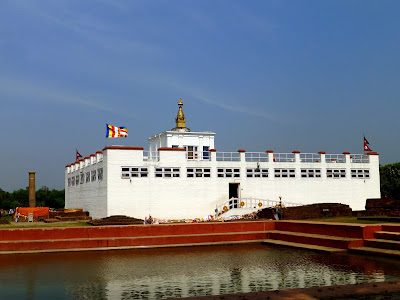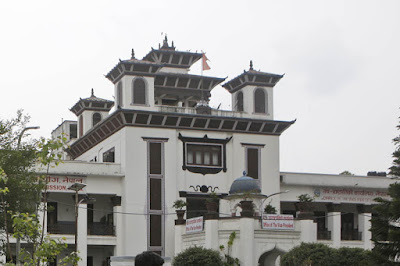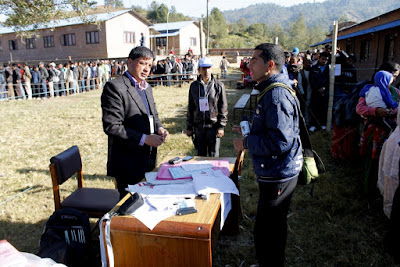National Heroes
King Prithvi Narayan shah
Prithvi Narayan shah was the king of Gorkha. He was a great politician, and a successful and farsighted leader. During his regime, Nepal was fragmented into several small kingdoms called Baise and Chaubise Rajyas. British India Company was rulling over India at that timeand wanted to capture Nepal. He was anxious for the security of those scattered small kingdoms of Nepal. He iniated unification campaign and unified several kingdoms of Nepal. After conquering the Kathmandu valley, he made it the capital of the country. Therefore he is also called as the 'Founder of Modern Nepal'.
King Ram Shah
Ram shah was a king of Gorkha. He was famous for his economic, social, judicial, and administrative reforms. He introduced standard system of weight, scale, and measurement in his state. He introduced Mana, Pathi, Dhak, Taraju, etc. He fixed the rate of interest, systematized the irrigation system and made the rule for punishing the criminals. He initiated a good system of justice and the rule of law in the state. The proverb,"If you are deprived of justice, go to Gorkha" was popular during his time.
Pasang Lhamu Sherpa
Pasang Lhamu Sherpa, a women of courage and determination, was the first Nepali women to the summit of Mt. Everest. She successfully climbed Mt.Everest on 10th Baisakh 2050 BS. Unfortunately, while she was returning from the summit, she became a victim of avalanche and lost her life. She is the source of inspiration for all the nepalese women for their courage and determination to perform the adventurous activities to glorify the nation. Her victory over the Mt.Everest has proved that courage and high degree of confidence makes people achieve their goal successfully no matter wheather they are male or female. Her name was inclided in the list of national heroes on 90th Baisakh 2059 BS.
Mahaguru Falgunanda
Mahaguru Falgunanda Lingden was born on 25th Kartik 1942 BS in a Limbu family in Illam. He was a great spirtual leader as well as a social worker. He is known as Mahaguru (the great teacher) especially among the Kirant Limbuus. He is remembered for his phenomenal socio-cultural and religious messages in the Limbu ethnicity. Non-violence and religion was his key messages. He passed ten-points resolution called Satya Dharma Muchulka and announced various codes of conducts to be followed by Kirant community. They were related to ethnic, economic, social and religiousreforms in the Limbu community.
His advices were to eradicate the prevailing social evils among the kirants such as consuming alcohol, gambling, sacrificing animals, birds etc. He encouraged the people to establish temples and schools in every village to educate children of Kirant community and to be honest and guided by good deeds. He also built many shrines. He was declared as a national hero on 16th Mangsir, 2006 BS.
Bhimsen Thapa
Bhimsen Thapa was the first prime minister of Npeal. He was a brave warrior and good administrator of the country. He was a true patriot with good vision. He was against the British imperialism. He brought about many reforms in social, economic, religious and military fields in the country. Under his effective leadership, Nepali soldiers fought bravely against British Indian power during Anglo-Nepal war. he had continued the unification campaign initiated by Prithvi Narayan Shah and extended the western border toSutlaj. Despite the efforts made by his opponents to harm him, he earned a good name for his love of nationalism.




















